Anne Applebaum in The Atlantic:
 Propaganda also works best in a vacuum, when there are no competing messages, or when the available alternative messengers inspire no trust. Since mid-March, China has been sending messages out into precisely this kind of vacuum: a world that has been profoundly changed not just by the virus, but by the American president’s simultaneously catastrophic and ridiculous failure to cope with it. The tone of news headlines ranges from straight-faced in Kompas, a major Indonesian news outlet—Trump Usulkan Suntik Disinfektan dan Sinar UV untuk Obati Covid-19, or “Trump Proposes Disinfectant Injection and UV Rays to Treat COVID-19”—to snide, from Le Monde in France—Les élucubrations du « docteur » Trump, or “The Rantings of ‘Doctor’ Trump.” The incredulous first paragraph of an article in Sowetan, from South Africa, declares that “US President Donald Trump has again left people stunned and confused with his bizarre suggestion that disinfectant and ultraviolet light could possibly be used to treat Covid-19.” El Comercio, a distinguished Peruvian newspaper, treated its readers to photographs of Deborah Birx, the White House coronavirus-response coordinator, grimacing as the president asked her whether the injection of disinfectant might be a cure.
Propaganda also works best in a vacuum, when there are no competing messages, or when the available alternative messengers inspire no trust. Since mid-March, China has been sending messages out into precisely this kind of vacuum: a world that has been profoundly changed not just by the virus, but by the American president’s simultaneously catastrophic and ridiculous failure to cope with it. The tone of news headlines ranges from straight-faced in Kompas, a major Indonesian news outlet—Trump Usulkan Suntik Disinfektan dan Sinar UV untuk Obati Covid-19, or “Trump Proposes Disinfectant Injection and UV Rays to Treat COVID-19”—to snide, from Le Monde in France—Les élucubrations du « docteur » Trump, or “The Rantings of ‘Doctor’ Trump.” The incredulous first paragraph of an article in Sowetan, from South Africa, declares that “US President Donald Trump has again left people stunned and confused with his bizarre suggestion that disinfectant and ultraviolet light could possibly be used to treat Covid-19.” El Comercio, a distinguished Peruvian newspaper, treated its readers to photographs of Deborah Birx, the White House coronavirus-response coordinator, grimacing as the president asked her whether the injection of disinfectant might be a cure.
Quotations from the president’s astonishing April 23 press conference have appeared on every continent, via countless television channels, radio stations, magazines, and websites, in hundreds of thousands of variations and dozens of languages—often accompanied by warnings, in case someone was fooled, not to drink disinfectant or bleach. In years past, many of these outlets presumably published articles critical of this or that aspect of U.S. foreign policy, blaming one U.S. president or another. But the kind of coverage we see now is something new. This time, people are not attacking the president of the United States. They are laughing at him. Beppe Severgnini, one of Italy’s best-known columnists, told me that while Italians feel enormous empathy for Americans who have suffered as they have, they feel differently about Trump: “In this time of darkness and depression, he keeps us entertained.”
But if Trump is ridiculous, his administration is invisible.
More here.

 The modern world has been shaped by the belief that humans can outsmart and defeat death. That was a revolutionary new attitude. For most of history, humans meekly submitted to death. Up to the late modern age, most religions and ideologies saw death not only as our inevitable fate, but as the main source of meaning in life. The most important events of human existence happened after you exhaled your last breath. Only then did you come to learn the true secrets of life. Only then did you gain eternal salvation, or suffer everlasting damnation. In a world without death – and therefore without heaven, hell or reincarnation – religions such as Christianity, Islam and Hinduism would have made no sense. For most of history the best human minds were busy giving meaning to death, not trying to defeat it. The
The modern world has been shaped by the belief that humans can outsmart and defeat death. That was a revolutionary new attitude. For most of history, humans meekly submitted to death. Up to the late modern age, most religions and ideologies saw death not only as our inevitable fate, but as the main source of meaning in life. The most important events of human existence happened after you exhaled your last breath. Only then did you come to learn the true secrets of life. Only then did you gain eternal salvation, or suffer everlasting damnation. In a world without death – and therefore without heaven, hell or reincarnation – religions such as Christianity, Islam and Hinduism would have made no sense. For most of history the best human minds were busy giving meaning to death, not trying to defeat it. The  When the Venerable Tenzin Priyadarshi announced to his parents, secular Hindus, that he planned to convert to Buddhism and ordain as a monk, his father convened 76 members of his extended family to discuss the matter. Over several hours his relatives plied him with questions, an ordeal Priyadarshi calls “trial by family” in his memoir, Running Toward Mystery: The Adventure of an Unconventional Life, coauthored by Zara Houshmand. To understand his parents’ severe reaction, it helps to know that at the time of the interrogation Priyadarshi was only 10 years old. He had just run away from boarding school in West Bengal, India, and vanished without a trace. His family had spent two anguished weeks trying to locate him and finally tracked him down at a Japanese Buddhist temple in Bihar, nearly 300 kilometers from the school where he was supposed to be. At that moment, they were not feeling very sympathetic.
When the Venerable Tenzin Priyadarshi announced to his parents, secular Hindus, that he planned to convert to Buddhism and ordain as a monk, his father convened 76 members of his extended family to discuss the matter. Over several hours his relatives plied him with questions, an ordeal Priyadarshi calls “trial by family” in his memoir, Running Toward Mystery: The Adventure of an Unconventional Life, coauthored by Zara Houshmand. To understand his parents’ severe reaction, it helps to know that at the time of the interrogation Priyadarshi was only 10 years old. He had just run away from boarding school in West Bengal, India, and vanished without a trace. His family had spent two anguished weeks trying to locate him and finally tracked him down at a Japanese Buddhist temple in Bihar, nearly 300 kilometers from the school where he was supposed to be. At that moment, they were not feeling very sympathetic. Nouriel Roubini in The Guardian:
Nouriel Roubini in The Guardian: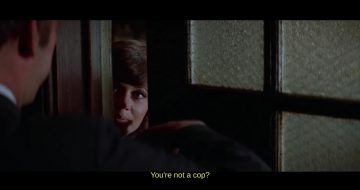 Sonya Aragon in n+1:
Sonya Aragon in n+1: Jack Zipes in Tribune:
Jack Zipes in Tribune: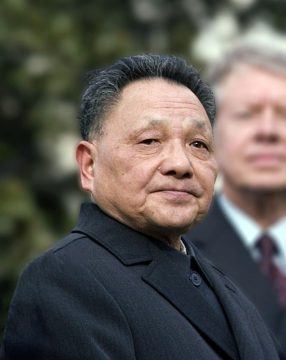 Isabella Weber in Global Perspectives:
Isabella Weber in Global Perspectives: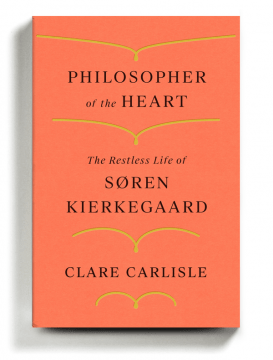 Kierkegaard commonly complained that he was misunderstood (he also complained that he was not misunderstood in the right ways). But few philosophers have wanted so keenly to be of use, according to a new biography, “Philosopher of the Heart,” by Clare Carlisle. Not for Kierkegaard the abstractions of philosophy — he saw the discipline as performing the painful, prosaic work of becoming human: “We must work out who we are, and how to live, right in the middle of life itself, with an open future ahead of us,” Carlisle summarizes his approach. “Just as we cannot step off the train while it is moving, so we cannot step away from life to reflect on its meaning.” There are famous challenges to telling the life of Kierkegaard. He died at 42, in Copenhagen, seemingly exhausted after an extraordinary burst of productivity that gave us a flotilla of philosophical texts masquerading as sermons, dialogues, found documents, book reviews.
Kierkegaard commonly complained that he was misunderstood (he also complained that he was not misunderstood in the right ways). But few philosophers have wanted so keenly to be of use, according to a new biography, “Philosopher of the Heart,” by Clare Carlisle. Not for Kierkegaard the abstractions of philosophy — he saw the discipline as performing the painful, prosaic work of becoming human: “We must work out who we are, and how to live, right in the middle of life itself, with an open future ahead of us,” Carlisle summarizes his approach. “Just as we cannot step off the train while it is moving, so we cannot step away from life to reflect on its meaning.” There are famous challenges to telling the life of Kierkegaard. He died at 42, in Copenhagen, seemingly exhausted after an extraordinary burst of productivity that gave us a flotilla of philosophical texts masquerading as sermons, dialogues, found documents, book reviews.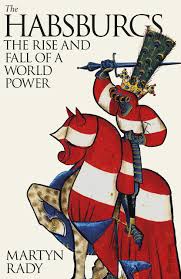 The House of Habsburg has a plausible claim to having been the most successful ruling dynasty in world history. For a thousand years, from the dynasty’s emergence as feudal warlords in northern Switzerland in the 10th century to their ousting as emperors of Austria in the early 20th, they reigned at one time or another in most European countries (including, briefly, England and Ireland), and over colonial possessions that reached across the globe, from Peru to the Philippines (the one nation that still bears the name of a Habsburg king).
The House of Habsburg has a plausible claim to having been the most successful ruling dynasty in world history. For a thousand years, from the dynasty’s emergence as feudal warlords in northern Switzerland in the 10th century to their ousting as emperors of Austria in the early 20th, they reigned at one time or another in most European countries (including, briefly, England and Ireland), and over colonial possessions that reached across the globe, from Peru to the Philippines (the one nation that still bears the name of a Habsburg king). “IT’S LIKE WE’RE AT THE CENTER
“IT’S LIKE WE’RE AT THE CENTER 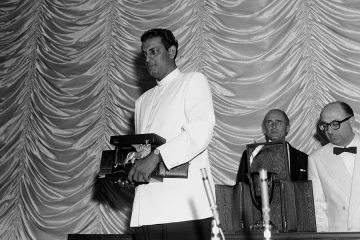 Of the films of the great Indian director Satyajit Ray, the Japanese master Akira Kurosawa once said that not having seen them “is like never having seen the sun or the moon.” I completely agree. For me, Ray is perhaps the finest of all film artists. The humanism of his vision, and the lyricism he brings to it, is overwhelming. No other director has so consistently expressed what it means to be alive. No other filmmaker, male or female, has explored with such profound grace and understanding the inner lives of women. I had the honor in the fall of 2008 to be invited to Kolkata, India, to lecture to local students and film societies about his work. As a white Westerner, I was wary of coming across like some sort of postcolonial know-it-all. I needn’t have worried. Our shared love for Ray dissolved any barriers. I was accompanied by a member of the Academy of Motion Picture Arts and Sciences who was instrumental in the ongoing restoration of Ray’s films, many of which were in a state of disrepair. (Ray was awarded an honorary Oscar in 1992, shortly before his death.)
Of the films of the great Indian director Satyajit Ray, the Japanese master Akira Kurosawa once said that not having seen them “is like never having seen the sun or the moon.” I completely agree. For me, Ray is perhaps the finest of all film artists. The humanism of his vision, and the lyricism he brings to it, is overwhelming. No other director has so consistently expressed what it means to be alive. No other filmmaker, male or female, has explored with such profound grace and understanding the inner lives of women. I had the honor in the fall of 2008 to be invited to Kolkata, India, to lecture to local students and film societies about his work. As a white Westerner, I was wary of coming across like some sort of postcolonial know-it-all. I needn’t have worried. Our shared love for Ray dissolved any barriers. I was accompanied by a member of the Academy of Motion Picture Arts and Sciences who was instrumental in the ongoing restoration of Ray’s films, many of which were in a state of disrepair. (Ray was awarded an honorary Oscar in 1992, shortly before his death.)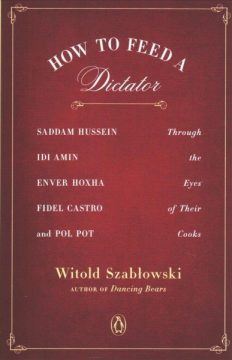 In the new book How to Feed a Dictator, journalist Witold Szablowski tracks down the chefs who served these five men, to paint intimate portraits of how they were at home and at the table.
In the new book How to Feed a Dictator, journalist Witold Szablowski tracks down the chefs who served these five men, to paint intimate portraits of how they were at home and at the table.